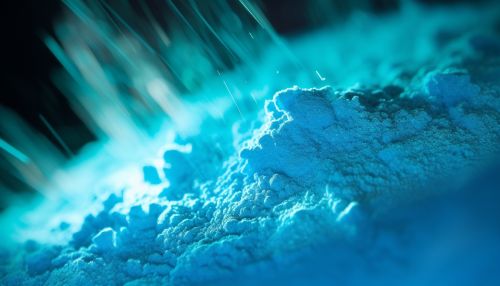Phosphorus
Overview
Phosphorus is a chemical element with the symbol P and atomic number 15. Elemental phosphorus exists in two major forms, white phosphorus and red phosphorus, but because it is highly reactive, phosphorus is never found as a free element on Earth. It has a concentration in the Earth's crust of about one gram per kilogram (compare copper at about 0.06 grams). With few exceptions, minerals containing phosphorus are in the maximally oxidized state as inorganic phosphate rocks.
Characteristics
Phosphorus is a nonmetal that lies just below nitrogen in group 15 of the periodic table. This element exists in several forms, of which white and red are the best known. White phosphorus is definitely the more exciting of the two. When white phosphorus occurs in nature this can be a serious danger to our health. White phosphorus is extremely poisonous and in many cases exposure to it will be fatal.


History
Phosphorus was first isolated as white phosphorus in 1669. Hennig Brand, a German merchant, obtained it from urine. Brand had produced phosphorus from urine for several years, possibly with the aid of alchemists, before he found a method of producing it in large quantities by evaporating urine and heating the residue until phosphorus vapor was produced. This process was quite hazardous because phosphorus is highly flammable and its vapor is poisonous.
Occurrence and Production
Phosphorus is not found free in nature, but it is widely distributed in many different minerals. The primary commercial source of phosphorus is phosphate rock, which contains the mineral apatite, an impure tri-calcium phosphate. The production of phosphorus from phosphate rock involves two major steps. First, the phosphate rock is reacted with sulfuric acid to produce phosphoric acid. Phosphoric acid is then reacted with ammonia to produce the ammonium phosphate, a fertilizer.
Applications
Phosphorus is used in the manufacture of safety matches, pyrotechnics and incendiary shells. Phosphorus is also used in steel manufacture and in the production of phosphor bronze. It is also used in numerous other applications, including the production of phosphoric acid, one of the three most commonly used acids in industry.
Biological Role
Phosphorus is an essential nutrient for plants and animals. It plays a critical role in cell development and is a key component of molecules that store energy, such as ATP (adenosine triphosphate), DNA and lipids (fats and oils). Insufficient phosphorus in the soil can result in a severe drop in crop yield.
Environmental Impact
Phosphorus compounds cause heavy nutrient pollution in water bodies and are responsible for eutrophication. They cause algae and other aquatic plants to grow excessively. When these plants die, they consume oxygen in the water, leading to the death of fish and other aquatic life.
